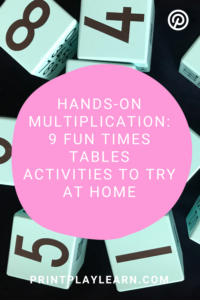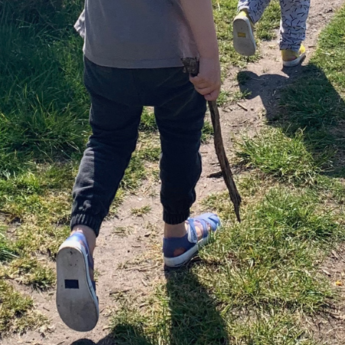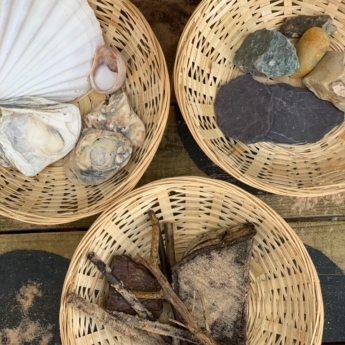Believe it or not, maths doesn’t have to be boring. Especially when it involves hands-on activities that engage young minds. Teaching times tables doesn’t have to be a dull exercise of memorisation or repetitive number songs – although if that works for your child, that’s great too! Learning times tables can be an exciting journey filled with creativity. In this article, we’ll explore 20 fun and hands-on times tables activities that you can enjoy together:
1. Play Multiplication Bingo
Let’s start with a classic game known to get kids squealing with excitement… Bingo! Use a piece of paper to create bingo cards with multiplication problems, then call out the answers. If the number called is the answer to one of the times table problems featured on their card, they cross it off. When their card is complete, they shout Bingo!
2. Try Multiplication Top Trumps
Does your child enjoy the comparison game Top Trumps? If so, how about making your own set of cards featuring multiplication problems? Take turns to place down a card and see who has the highest answer for their multiplication problem. Like in Top Trumps, when you run out of cards, count who has the most cards in the end to discover the winner.
3. Get creative with Multiplication Art
For a challenging take on paint-by-numbers, try creating a paint-by-multiplication art piece. Draw a simple image or add numbers to an existing colouring, then select colours to go with each times table, for example (2×4 = yellow, 2×5 = red, 2×6 = brown etc.)
4. Practice multiplication using board games
Many board games involve multiplication. For example, in Monopoly, while working out the rent on properties. Playing board games can help kids see the real-world applications of times tables without realising they are using them!
5. Take their times’ tables outdoors
For outdoor multiplication fun, you could use chalk to write multiplication problems for your children on the pavement. They can then answer them with chalk or water and a paintbrush, or create a big grid of numbers and have your child hop, skip, or jump to the answers of multiplication problems you shout out.
6. Use Lego to demonstrate multiplication
Lego bricks are a fantastic way to engage in hands-on learning. Explain to your child that multiplication can be thought of as making ‘arrays’ (a group of things arranged into rows and columns). For instance, if you have 3 rows of Lego bricks, each with 4 bricks in a row, you’re essentially dealing with a 3×4 multiplication problem. Then, make arrays of bricks and ask them if they can tell you the multiplication problem and the answer. They could then make you some in return. It’s always fun to challenge a grown-up!
7. Let a dice roll lead the way
If you want to add a bit of fun to practising times tables the traditional ways, simply hand your child dice and ask them to tell you the answer to the problem based on what they roll. For example, if you choose the 2 times table and they roll 6, they’d tell you “2 x 6 = 12”. Use 2 dice to go up to 12.
8. Make multiplication yummy
How about combining maths with a tasty treat? Start by choosing food that can be easily divided into equal groups. For instance, you could use blueberries, chocolate buttons, or raisins.
Lay out the chosen food items on a clean surface, like a table or tray. Next, give your child a multiplication problem, like 3 x 4. Explain that this means you need to create 3 groups, each with 4 food items. Invite your child to then divide the food items into 3 groups, with 4 items in each group.
Once the problem is solved and the groups are created, it’s snack time!
9. Multiplication Scavenger Hunt
For a game of Multiplication Scavenger Hunt, use Post-it notes to write items or clues related to multiplication problems. For example, if you’re working on the 4 times tables, a clue might be “Find something in the house that has 4 sides” or “Find something that has 2 x 2 legs”. Your child’s task is to hunt for these items and stick to the corresponding multiplication problems. You can also introduce a time element by challenging your child to complete the scavenger hunt within a set timeframe, adding an extra layer of fun.
Excited about trying these multiplication activities? You might also be interested in fun literacy ideas, so why not head over to our article Low-pressure Ways to Encourage a Love of Reading.


